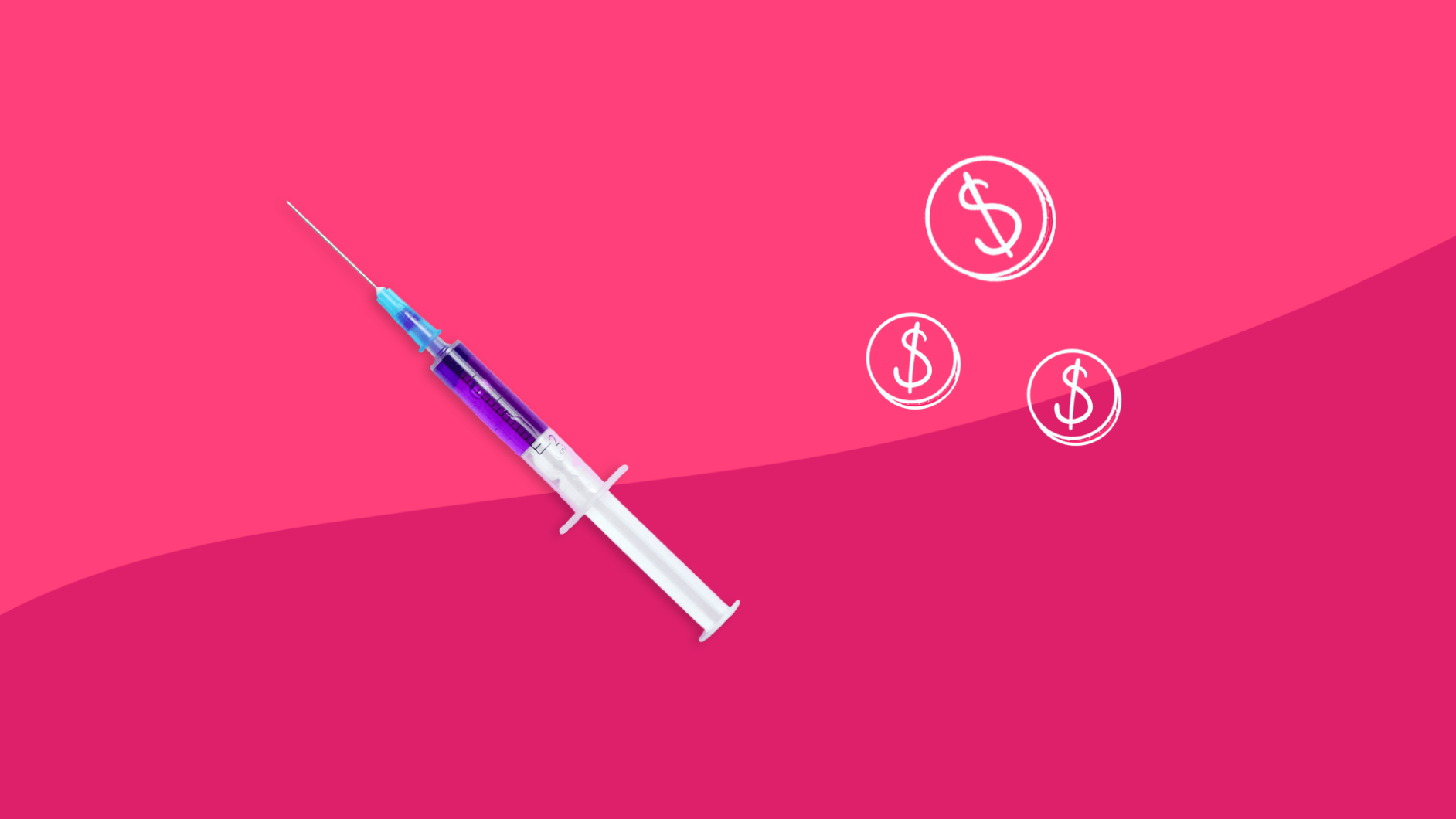Key takeaways
Humira is a biologic TNF blocker medicine often prescribed to treat rheumatoid arthritis, Crohn’s disease, plaque psoriasis, and other inflammatory diseases.
Without insurance or discounts, Humira can cost more than $9,000 per month.
Humira’s manufacturer, AbbVie, has a patient assistance program that can provide free medication to individuals with low income and little or no insurance coverage.
Although health insurance and Medicare Part D plans may cover Humira for approved indications, coverage and out-of-pocket costs vary by plan.
Aside from myAbbVie Assist and insurance, patients can save money on Humira by applying for a Humira savings card, getting a SingleCare discount card, considering biosimilars, and looking into government assistance programs.
Humira (adalimumab) is a brand-name drug prescribed for a range of inflammatory health conditions—including moderate to severe rheumatoid arthritis, Crohn’s disease, plaque psoriasis, psoriatic arthritis, hidradenitis suppurativa, ankylosing spondylitis, and ulcerative colitis. It’s not cheap, though. Since it’s a specialty drug, it can be pricey. Without insurance, Humira can cost more than $9,000 per month. But certain resources can drop that price drastically. And with the AbbVie patient assistance program, some U.S. adults can even get it for free.
What is the Humira patient assistance program?
Created by Humira’s manufacturer, AbbVie Inc., myAbbVie Assist is a patient assistance program that helps make Humira and other prescription drugs made by AbbVie more accessible to uninsured patients and others who may have difficulties paying out of pocket. Anyone who qualifies can receive their medications for free.
However, you have to meet specific eligibility criteria to qualify. According to AbbVie, eligible patients must:
- Live in the United States
- Be receiving treatment from a U.S. healthcare provider
- Have a current Humira prescription
- Be uninsured or underinsured
- Have an annual income of less than $90,360 for an individual, $122,640 for a couple, $154,920 for a household of three, or $187,200 for a household of four
Eligible patients can apply online or print a paper form, then mail or fax it in. The application contains a section for the prescribing health care provider to fill out. Applicants will need to provide proof of income, and anyone who has insurance will need to include their plan information.
An AbbVie representative will review the application within two days. If they deem you eligible, you’ll receive your Humira for free—no copays or shipping costs. AbbVie says its patient assistance program helped about 200,000 patients in 2022.
Anyone who takes Humira plus another AbbVie drug can apply for financial assistance for both. Just know that each medication requires a separate application.
How much does Humira cost?
Without healthcare coverage, Medicare, or discounts, Humira’s out-of-pocket cost can go well into four-digit territory. On average, two pre-filled syringe kits—a 30-day supply—cost about $9,347. That means a full year of the medication could cost more than $100,000. Fortunately, with insurance coverage and other resources, many people pay much less.
“The cost of Humira can vary significantly based on factors such as dosage, frequency of administration, and the pharmacy dispensing the medication,” according to Sean Ormond, MD, founder of Atlas Pain Specialists.
Does insurance cover Humira?
“Many insurance plans cover Humira, but coverage details can vary widely depending on the specific plan and the medical condition being treated,” says Dr. Ormond. “Plus, prior authorization may be required by some insurance plans before they will cover Humira. This involves the healthcare provider demonstrating the medical necessity of the medication.” Prior authorization might involve the healthcare provider sending a special request to the insurance company, or it might involve proving that you tried a less expensive medication first, which is called step therapy.
Every plan has its own set of terms, so it’s important to check the details and consult a healthcare provider when considering Humira.
Does Medicare cover Humira?
“Humira is usually covered under Medicare Part D,” says Supriya Rao, MD, a board-certified physician in internal medicine, gastroenterology, obesity medicine, and lifestyle medicine. However, “the extent of coverage depends on what plan you are enrolled in.” These plans either come bundled with a Medicare Advantage (Part C) plan or as a stand-alone Part D add-on for Medicare Part A or Part B plans.
However, like private insurance, each plan is different—and their copays and deductibles can vary—so check the plan’s formulary or contact a plan representative for coverage details.
Does Medicaid cover Humira?
Medicaid is a program that receives funding from both the federal and state governments to provide extra assistance for low-income Americans. According to the Humira website, Medicaid plans may cover Humira if you meet the eligibility requirements—but it’s different for each state.
Why is Humira so expensive?
Humira’s high average price comes primarily from the complicated process required to make it. Manufacturers make most drugs by mixing synthetic chemicals together. However, Humira is a biologic drug, which is “derived from living cells, which makes their creation more complex and costly,” according to Dr. Rao. “A lot goes into the research and development of biologics, which drives the prices up that the consumer sees.”
Humira belongs to a class of medications called tumor necrosis factor (TNF) blockers. “These medications function by inhibiting TNF, a substance in the body that leads to inflammation and related symptoms,” Dr. Rao explains. The drug binds to the TNF protein, keeping it from causing any negative effects.
On top of that, developing a new drug is a long, expensive process. A study published in 2020 estimated that the cost of bringing a new drug to market can range from $766 million to $2.8 billion. Not only does the manufacturer have to pay for research and development, but they also have to run clinical trials and submit the medication to the Food and Drug Administration (FDA) for a drug review—which all costs money.
Other financial help for Humira
Insurance and AbbVie’s patient assistance program can go a long way, but they’re far from the only ways to save money on Humira. Here are a few other ways patients can potentially make it more affordable, depending on their financial situation.
Sign up for SingleCare discounts
SingleCare negotiates directly with pharmacies to get members discounts at over 35,000 locations across the United States. For example, SingleCare discounts can knock more than $2,000 off Humira’s monthly price. Signing up for a SingleCare card is quick and free, and all you have to do is present the card at a local participating pharmacy. You’re eligible for SingleCare discounts even if you have Medicare or private health insurance, but pharmacies typically won’t apply both discounts at once.
Apply for Humira’s copay assistance program
AbbVie’s patient assistance applies primarily to uninsured patients, but its Humira Complete Savings Card can help people with health insurance save as well. In fact, qualified patients can access the drug for as little as $5 per month. Eligible patients must have health insurance that covers only part of Humira’s price, and they cannot receive assistance from any government-sponsored programs—such as Medicare, Medicaid, TRICARE, and VA programs.
If AbbVie approves your application, you will be sent a discount card to present at your local pharmacy. Not every pharmacy accepts them, though. Fortunately, the Humira Complete Prescription Rebate allows some patients to get reimbursements for their out-of-pocket costs.
Ask about biosimilars
According to the FDA, a biosimilar is “highly similar to a biologic medication already approved by FDA,” which has “no clinically meaningful differences from the reference product.” For most of its existence, Humira had no biosimilar competition. But today, there are several biosimilar options on the market, including Amjevita, Cyltezo, Hyrimoz, and Hadlima.
The FDA considers biosimilars safe and effective, and they’re often cheaper, too, since the FDA can rely on the conclusions they drew about their biologic counterparts, requiring less extensive testing for approval. That lower cost might also make them more likely candidates for insurance coverage.
Look into government assistance programs
People who have a Medicare Part D plan and certain financial difficulties can consider the federal Medicare Extra Help program, a state-sponsored assistance program, or both. Eligible applicants for Extra Help must meet income and resource limits. For state-sponsored assistance programs, each state has different requirements for pharmaceutical assistance, so the application process depends on where you live.
Ask about a 90-day prescription
Many doctors write prescriptions for 30-day supplies, but certain studies have shown that patients who got 90-day supplies had greater savings on average—plus greater treatment adherence. And if you have insurance coverage, you’ll only need to make a copayment once every three months instead of every month.
Compare prices
In a recent survey, Consumer Reports discovered that drug prices can vary by hundreds of dollars between different pharmacies, even ones in the same city. So making an effort to find the best prices might lead to significant savings on Humira.
Ask questions
Not only can healthcare providers provide individualized medical advice, but they’re some of the best resources for advice on how to reduce the cost of prescriptions. Dr. Ormond encourages patients to “discuss their financial concerns regarding Humira openly with their healthcare provider, who may be able to provide guidance on cost-saving strategies or alternative treatment options.”
Sources
- myAbbVie Assist, AbbVie
- Insurance explained, Humira.com
- Understanding biologic and biosimilar drugs, American Cancer Society (2018)
- Tumor necrosis factor (TNF) inhibitors, American College of Rheumatology
- Estimated research and development investment needed to bring a new medicine to market, 2009–2018, JAMA (2020)
- The FDA’s drug review process: Ensuring drugs are safe and effective, U.S. Food and Drug Administration (2017)
- Save on Humira, Humira.com
- Biosimilar basics for patients, U.S. Food and Drug Administration (2023)
- Help with drug costs, Medicare.org
- State pharmaceutical assistance programs, National Conference of State Legislatures (2022)
- Medication days’ supply, adherence, wastage, and cost among chronic patients in Medicaid, Medicare & Medicaid Research Review (2012)
- How to pay less for your meds, Consumer Reports (2018)











